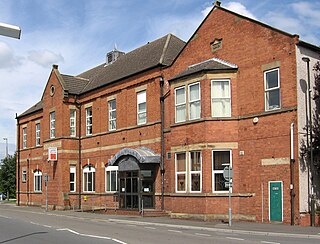
Staveley is a town and civil parish in the Borough of Chesterfield, Derbyshire, England. Located along the banks of the River Rother. It is northeast of Chesterfield, west of Clowne, northwest of Bolsover, southwest of Worksop and southeast of Sheffield.

Tibshelf is a village and civil parish in the Bolsover District in Derbyshire, England. It lies between the towns of Clay Cross, Shirebrook, Mansfield and Chesterfield and had a population of 4,348 at the 2021 Census. Tibshelf shares its boundaries with the villages of Morton, Pilsley, Newton, Teversal and Hardstoft.

Creswell is a former mining village located in the Bolsover district of Derbyshire, England. At the 2011 Census population details were included in the civil parish of Elmton-with-Creswell. Today it is best known for Creswell Crags and its model village. In September 1950 Creswell Colliery was the scene of one of the worst post-nationalisation mining disasters. Elmton Common is an area of allotments for the township of Creswell.

Mansfield Woodhouse railway station serves the settlement of Mansfield Woodhouse, which adjoins the town of Mansfield, both located in Nottinghamshire, England.

Pilsley is a village and civil parish in the district of North East Derbyshire in the county of Derbyshire, England, near the town of Chesterfield. At the 2011 Census the population was 3,487.
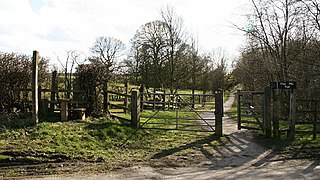
The Five Pits Trail is a rail trail in Derbyshire, England. It consists of a network of surfaced walkways for recreational use. The approximately 5.5-mile-long (8.9 km) trail links Grassmoor to Tibshelf. The Trail can be extended to 7.5 miles (12.1 km) by continuing along the route to Williamthorpe Ponds and Holmewood. Derbyshire County Council created the Five Pits Trail in 1989, following the route of the former Great Central Railway which served the five main coal mines of Grassmoor, Williamthorpe, Holmewood, Pilsley and Tibshelf.

Pilsley railway station is a disused station which served the village of Pilsley in Derbyshire, England. It was on the Great Central Main Line.
The Lancashire, Derbyshire and East Coast Railway (LD&ECR) was built to connect coalfields in Derbyshire and Nottinghamshire with Warrington and a new port on the Lincolnshire coast. It was a huge undertaking, and the company was unable to raise the money to build its line. With the financial help of the Great Eastern Railway it managed to open between Chesterfield and Lincoln with a branch towards Sheffield from 1896. Despite efforts to promote tourist travel, the passenger business was never buoyant, but collieries were connected to the line, at first and in succeeding years. The Great Eastern Railway, and other main line companies, transported coal to the southern counties, and the company's engines took coal to Immingham in great quantities. The company had a fleet of tank engines.

Arkwright Town railway station was in Arkwright Town, Derbyshire, England.
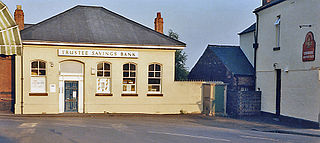
Clowne South railway station is a former railway station in Clowne, Derbyshire, England.

The Mansfield Railway was an eleven-mile railway line in Nottinghamshire, England. It was built to serve collieries opening in the coalfield around Mansfield, and ran between junctions at Clipstone and Kirkby-in-Ashfield on the Great Central Railway. It opened in 1916 and was worked by the GCR. Passenger stations were opened on the line, although, at the date of opening, road bus competition was already dominant.
Bolsover Tunnel is a disused and infilled twin-track railway tunnel between Carr Vale and Scarcliffe in Derbyshire, England.

Duckmanton Junction is a former railway junction near Arkwright Town in Derbyshire, England.

Staveley Town is a disused railway station in Staveley, Derbyshire in England.
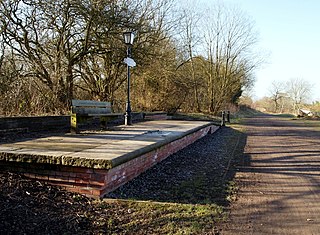
Teversall Manor is a former railway station in Teversal, Nottinghamshire, England. It was located on the border with Derbyshire, west of Mansfield. The station was a stop on the Midland Railway's line from Tibshelf and Whiteborough to Pleasley West, known as the Teversall & Pleasley Branch. The line's primary purpose was to transport coal.
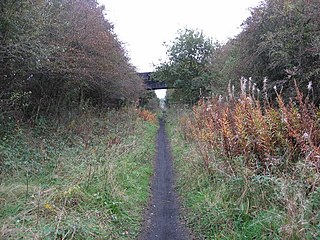
Pleasley East is a former railway station in Pleasley, Derbyshire, England on the Nottinghamshire border near Mansfield.
The Doe Lea branch is a mothballed railway line in Derbyshire, England. It connected the Derbyshire towns of Chesterfield, Staveley and Bolsover to the Nottinghamshire town of Mansfield. It also had a branch line to Creswell via the Derbyshire town of Clowne.
The Leen Valley lines of the Great Northern Railway were railway branch lines built to access the collieries in the Nottinghamshire coalfield in England. The Midland Railway had long been dominant in the area, but there was resentment against its monopolistic policies from coalowners, who encouraged the Great Northern Railway to build a line. The Leen Valley Line was opened in 1881; it ran as far as Annesley colliery. A passenger service was run the following year, and very considerable volumes of coal were hauled.
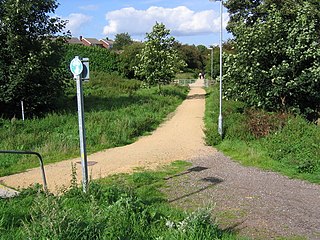
Skegby railway station is a former station on the Leen Valley Extension of the Great Central Main Line. It served the village of Skegby, Nottinghamshire in England.

Sutton-in-Ashfield Town railway station or simply "Sutton Town" railway station served the market town of Sutton-in-Ashfield, Nottinghamshire in England.
















